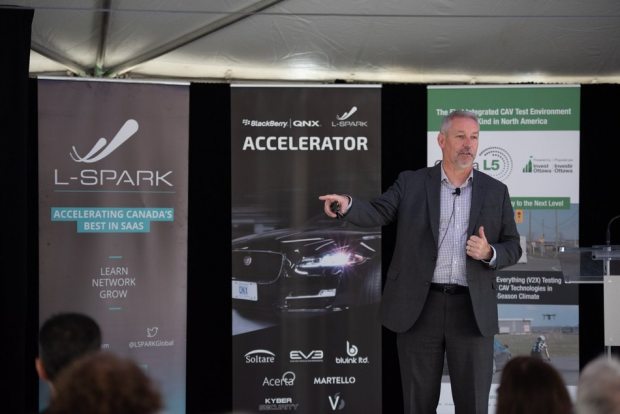Martello releases autonomous vehicle proof of concept developed in collaboration with Blackberry QNX

@itworldca
Published: May 31st, 2019
In celebration of National Autonomous Vehicle Day, Martello Technologies Group Inc. announced a proof of concept for a network performance management solution for mobile applications such as autonomous vehicles.
The proof of concept was a culmination of a six-month collaboration with Blackberry QNX as part of the BlackBerry QNX/L-Spark Accelerator program.
John Proctor, the chief executive officer and president for Martello spoke with IT World Canada about some of the major takeaways from this collaboration and what could be expected for autonomous vehicles in Canada.

Proctor said they were able to prove that it’s possible to maintain a reliable cellular network connectivity needed for much of the technology required by autonomous vehicles, including some of the luxuries like in-car apps to allow for passengers to work from the comfort of their vehicle.
“The vehicle itself will have a need in terms of being connected for safety data, map data, smart city connectivity, but then also the customer experience in the back… video conference, voice call, etc, into that vehicle. So there’s a range of things there,” said Proctor. “And what we showed is our solution can deal with those complex applications where demand and capacity are often variable. And that’s particularly challenging.”
If a vehicle were to lose connectivity, the technology used to create these vehicles would still maintain functionality, albeit in a more cautious manner or limited capacity.
“Ultimately, what you’re looking for is this car is going to have its own processing ability. And what it will then be able to do is recognize it’s lost that cellular connection. Doesn’t mean it’s not safe. Doesn’t mean it can’t recognize risks around it. So all those things will keep going,” explained Proctor. “Are we going to put certain controls on those times when they lose that center link? The recognition that there are things that it shouldn’t be doing? So for instance, are we increasing spacing between the cars, and so on? I think these are things we’re figuring out. We’re not saying that the cars aren’t safe without it, it just means you may not be able to do things you want to do with the vehicle given it doesn’t have a connection.”
While this may quell some fears among the general public, Proctor does say that he understands the feeling of mistrust that many foster towards this technology.
One prime example of how distrust in the public has materialized is the recent protests against the testing being done in Arizona by Waymo LLC.
Waymo began testing its driverless cars in Chandler, Ari., in 2017. Since then, they have dealt with numerous attacks on the vehicles, including rocks being thrown at them, tires being slashed, people trying to run them off the road, and in some of the more extreme examples, Waymo employees have been threatened by citizens brandishing weapons like pistols and pipes.
Proctor said that he believes situations like this can be avoided if the introduction of IoT technologies like autonomous vehicles and the infrastructure required is done at a reasonable pace with open lines of communication to keep the public informed.
“You have to have a team effort on this. If they are not comfortable using that technology, they won’t allow themselves to use it. Whereas if you can explain to them the benefits and walk them towards it. We don’t want to flood them,” he said.
So as Canada moves towards the adoption of the technologies, when might we be able to expect to see fully autonomous vehicles on Canadian roads?
According to Proctor, it is a little farther on the horizon than most might think; adding that the infrastructure that is put into place will be a huge factor that will affect the timeline.
“If we look at cities that can create roads that are specific to autonomous vehicles and autonomous vehicles alone, we could probably go faster. But the likelihood of that sort of infrastructure investment is light. So I think when we see fully, truly autonomous vehicles mixed in with regular traffic, I think is five, six plus years.”
Martello provides the only end-to-end Microsoft Teams performance monitoring tool that Microsoft recommends to their customers to maximize employee productivity. Our solution Vantage DX proactively monitors Microsoft 365 and Teams service quality, enabling IT with complete visibility of the user experience to ease troubleshooting of issues before they impact users. Find out why Martello is Microsoft’s go-to-solution for Microsoft Office 365 Monitoring >>